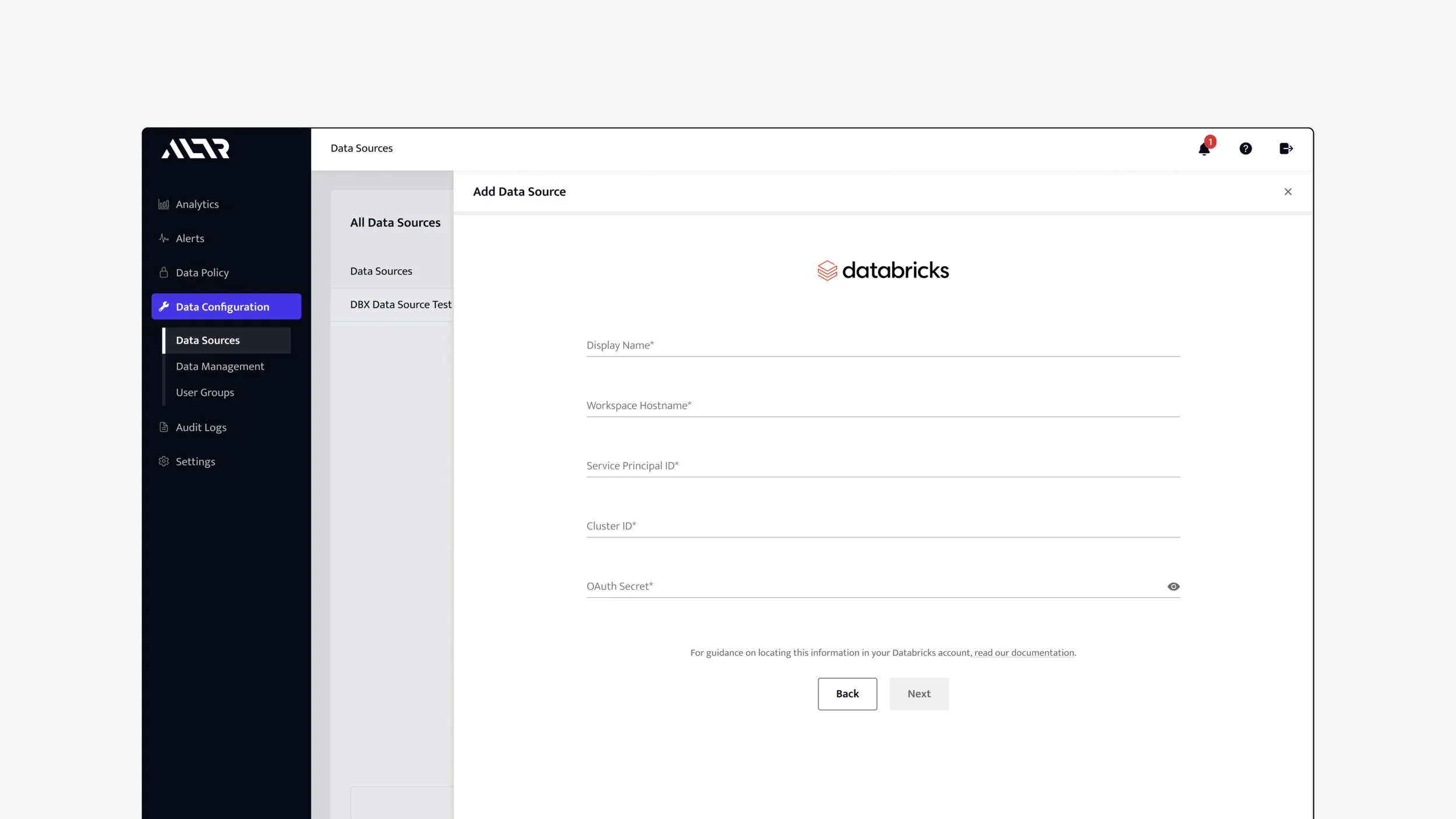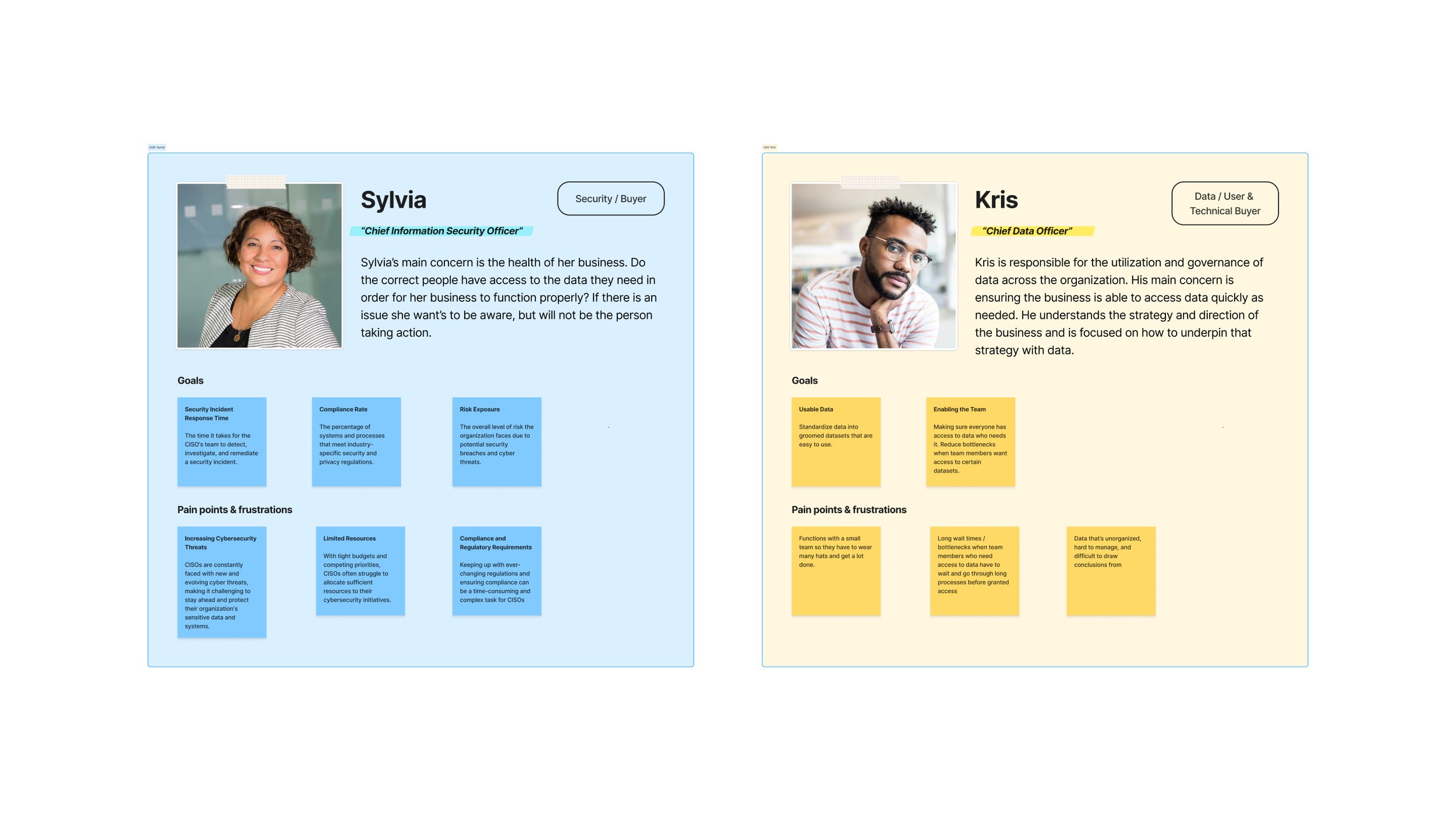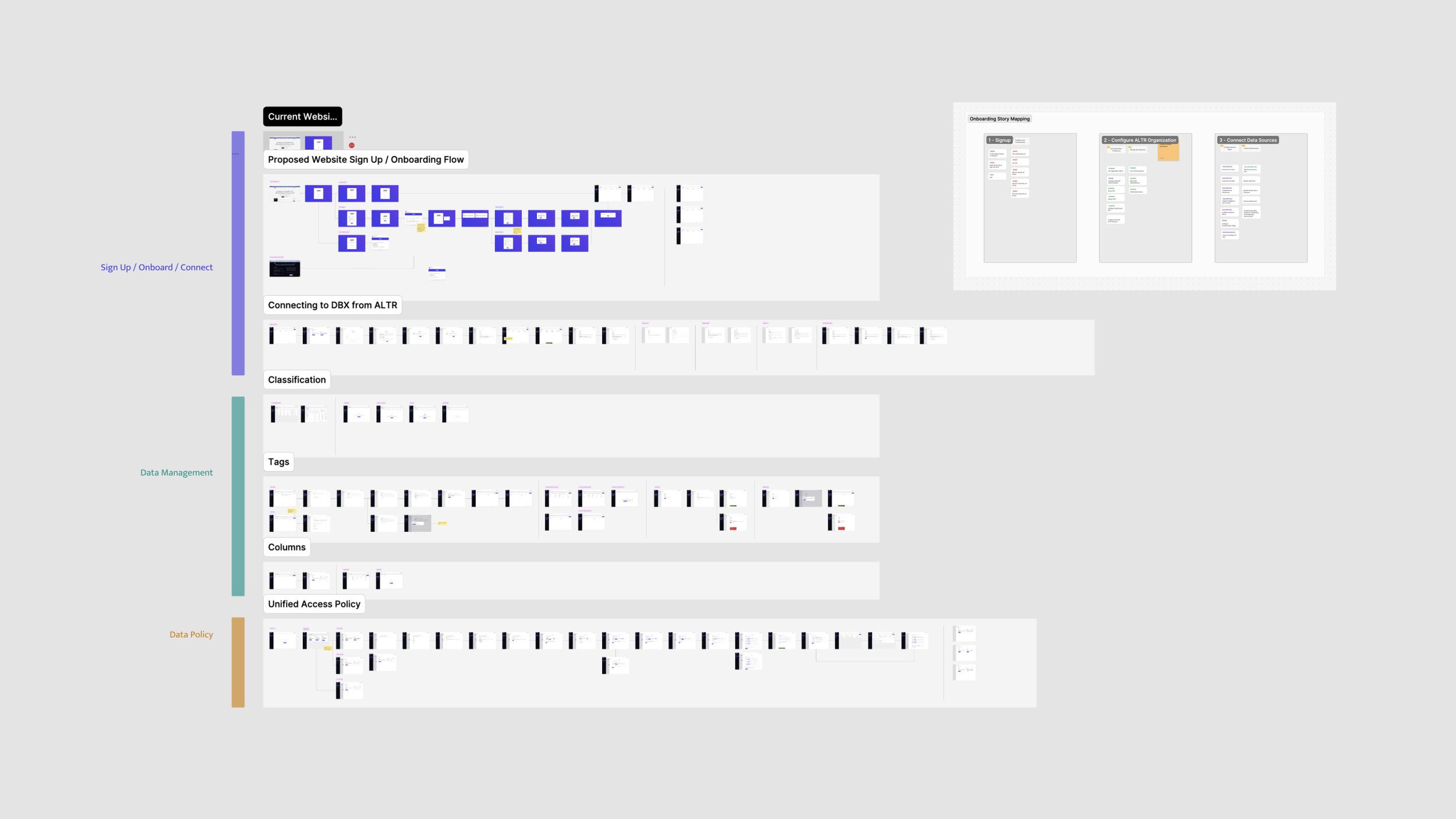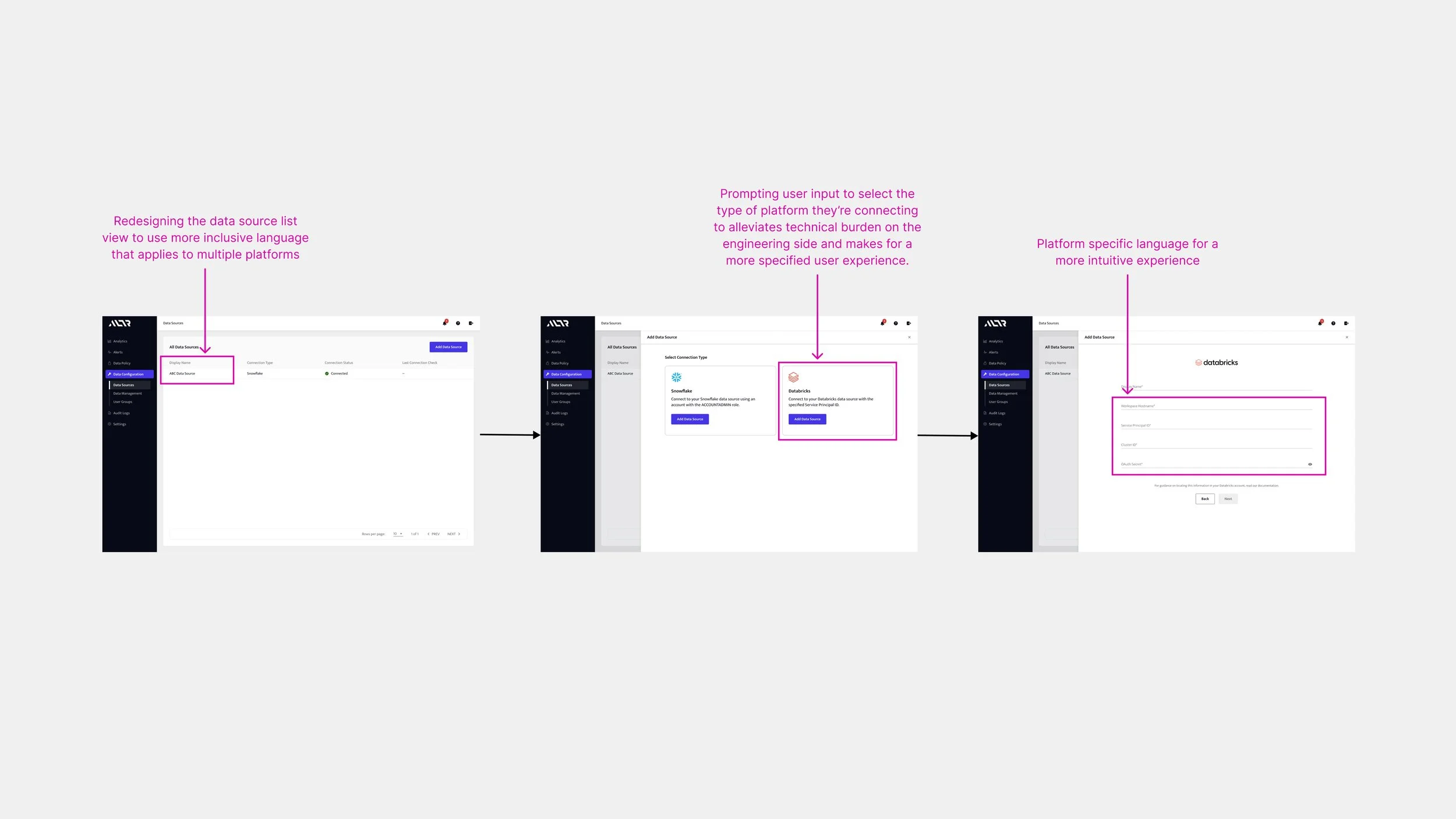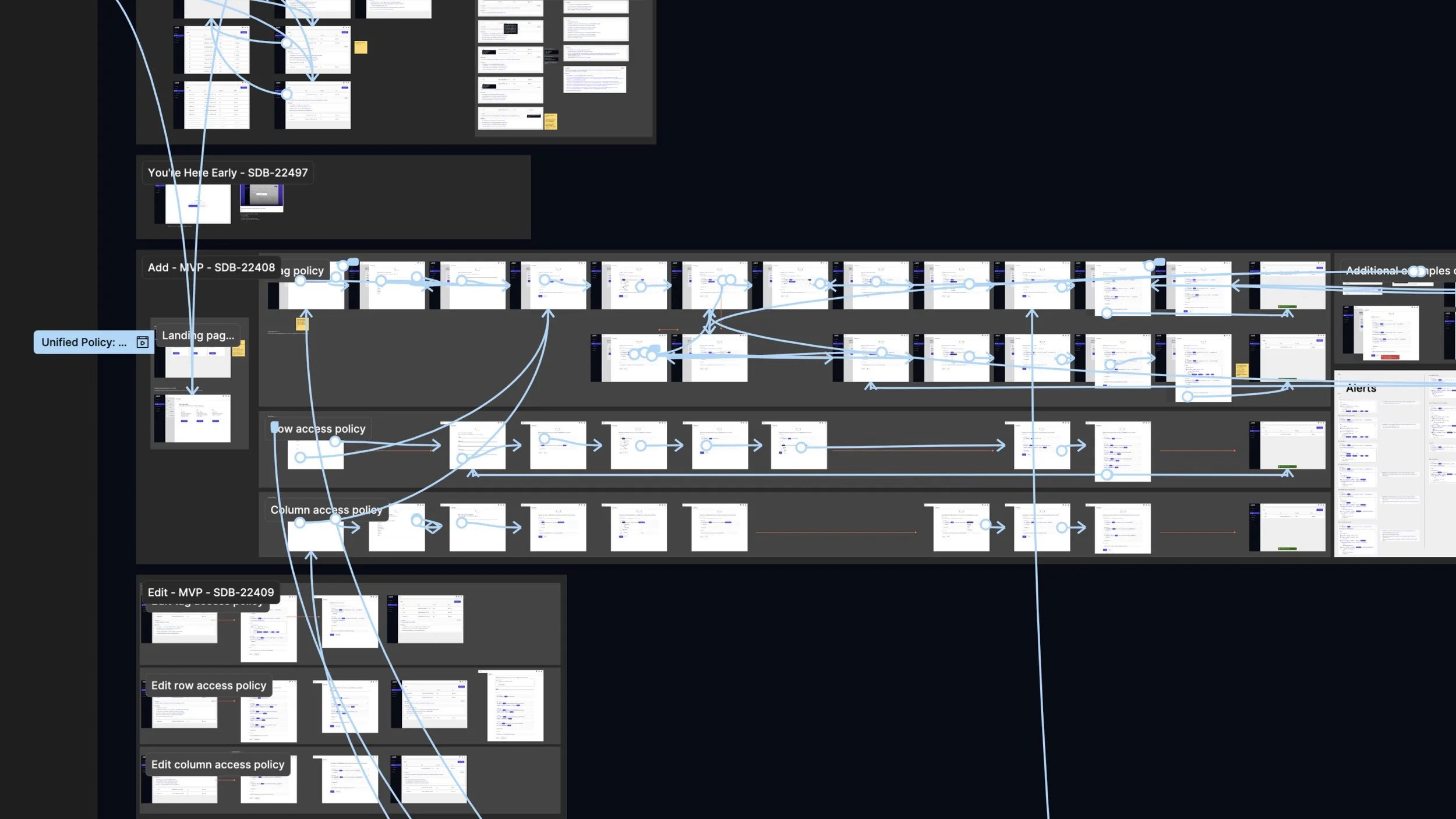Expanding Data Security for the Cloud - A Product Integration with Databricks
ALTR + Databricks
Databricks is a leading cloud-based data warehouse that stores sensitive data from companies all over the world.
Project
This case study describes the process of integrating ALTR with Databricks. Making ALTR compatible with a new platform of this scale took an immense amount of work and collaboration as we looked to solve complex technical problems whilst maintaining a user experience that felt seamless and unified.
Timeline
July 2024 - January 2025 (6 months)
Team
Ted Sandler, Laura Malins, Mark Snellman, Ben Locke, Bill DiFulvio, Elizabeth Warden, Kate McCarter, and many other talented folks at ALTR
ALTR is a software that provides additional security for companies storing their data in cloud warehouses. Through this integration ALTR is able to offer enhanced data protection for Databricks customers. This significantly expands the potential customer base for ALTR and enhances the user experience through increased compatibility across industry leading cloud data warehouses.
My Role
Lead UX/UI Designer
My Impact
I was the sole designer for this project; I collaborated across teams to design effective solutions from ideation to implementation. I led regular discussions, presented designs, and consolidated feedback from stakeholders. I worked very closely with our back and front end engineers to properly understand our technical parameters. I also collaborated closely with project managers to communicate expectations and manage project timelines.
Challenge
How might we expand our feature offerings to be compatible with Databricks warehouses in a way that feels unified and seamless?
Understanding User/Buyer Personas
We kicked things off by spending some time understanding our user(s) and their motives. A challenge faced by many in the B2B SaaS reality is that the person buying software is not always the end user. In order for the integration to be valuable it needs to meet the needs of both the buyer and user personas.
For this project, our buyer is likely an executive security officer looking to make sure the product is trustworthy and secure. Meanwhile, the end user is a data scientist or data officer who wants to ensure that the new software works efficiently, giving visibility to those who need it without bottlenecking others. We needed to design a solution that met both of those persona expectations in order to achieve a successful integration.
Understanding the Bigger Picture
In a perfect world we’d be able to work through the UX process neatly from discovery to build. In reality, however, the ideation process is often not as linear. Working across teams, juggling financial or time-based constraints, and aligning stakeholder priorities can all be factors that cause the scope of a project to change at any given point. With this in mind I started my design process by mapping out high level user journeys of major touchpoints in our existing product that the integration would affect. I worked closely with my product manager to review priorities and set deliverable expectations. A wholistic approach makes it easier to visualize how certain scope decisions affect the larger product and overall user experience.
Scalable Design Thinking
With an overview established, we started diving into higher fidelity designs for each specific user flow. This process often included a lot of collaboration with engineering and multiple rounds of design iteration. I approached every design solution with scalability in mind: how can we fold in new features without disruption existing functionality? Oftentimes this included a more thoughtful approach to the language used within the product or adding additional steps in the user journey to create a more specific experience better catered to their use case.
Iterative Design Thinking
With high fidelity mock ups and prototypes created I started the process of presenting flows to key internal stakeholders. Feedback from these sessions would be consolidated and implemented as necessary. This process will continue even after a feature is built as no product is ever truly ‘finished’. One of the most rewarding aspects of tech is the ability to receive feedback from users and make improvements quickly and regularly.
Reflection & Learnings
Key Learnings
‘Done’ is better than ‘perfect’. As a UX designer my brain is programmed to think of the best possible solutions for our users. This can sometimes be a hinderance and cause us to strive for something that may be inaccessible or unrealistic given real world constraints. The challenge and value of a good designer lies in creating the most impact for improvement within the parameters you’re given.
Understanding how to design on top of existing legacy software is key to a successful product. Maintaining a cohesive experience across the product when introducing new features can be a huge challenge and it’s important to recognize when to adapt to the new and when to hold true to existing patterns.
For more information about this project and my process please email me directly at genevaboyett@gmail.com




